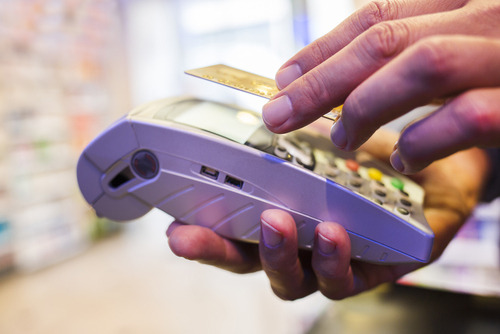We live in the information age, and the number of ways technology is facilitating the access of information is growing.
But while there are many people who are adept at riding the technological learning curve, there are others who need assistance with developing skills and knowledge to use technological innovations to their full potential.
According to a study by Barclays, more than a third of the population regularly ask family members for tech advice. However, more than 40 per cent say they do not feel qualified to answer the queries. This has no doubt led to arguments up and down the country, with more than 11 million Britons saying they are currently involved in a dispute over technology.
Help has emerged through services such as Barclay’s Digital Eagles, a new initiative that has put 7,000 experts in branches of the bank to field questions and give guidance to customers on all technology issues, and not only relating to Barclays offerings.
Moreover, Barclays’ innovative audio feature to cash machines introduced in 2012 has facilitated use for blind people. More than 80 per cent of the bank’s ATMs now have this feature, and its introduction has helped blind and partially-sighted people use the cash machines independently, in some cases for the first time in their lives, using their earphones to listen to instructions that are appearing on-screen. The innovation has also improved the ATM experience for customers with dyslexia and learning disabilities.
Personalised debit cards have also helped those less able. The idea for the service arose from a customer service situation. A personal banker helped a visually-impaired customer personalise their debit card to make the card easier to read. Barclays saw the potential of the situation and decided to make this an accessible option for all customers.
Now, the bank offers a variety of high-visibility debit card backgrounds to its current account customers. Customers who have personalised their cards using these designs love them. One customer called the cards ‘a step forward in meeting the needs of people with sight loss’ and added that they should help partially-sighted customers find their Barclays debit card among other cards in their purse or wallet.
Contactless payments, while convenient for fully-sighted people, can make the experience of payment less stressful for partially-sighted people. The feature of Barclays debit and credit cards allows customers to make low-value payments by simply tapping their cards on a contactless reader. There’s no need to enter a PIN, which makes checkout much less stressful for customers with visual, memory or dexterity-related disabilities.
What people may be less aware of is the Barclaycard PayTag, a sticker that has the same functionality as a contactless credit card, and can be attached to a mobile phone or key ring. Using the Barclaycard PayTag helps customers make contactless payments without using their credit card. It means customers with limited dexterity and visual impairments no longer need to search for the right card in their wallet or purse. They can simply tap their Barclaycard PayTag on the contactless reader in order to pay.
The world of technology can sometimes be a difficult place to navigate for people with visual and other disabilities, but it is handy to know that, as quickly as technology itself is advancing, the technology to help people use that technology is keeping pace in an effective way too.




